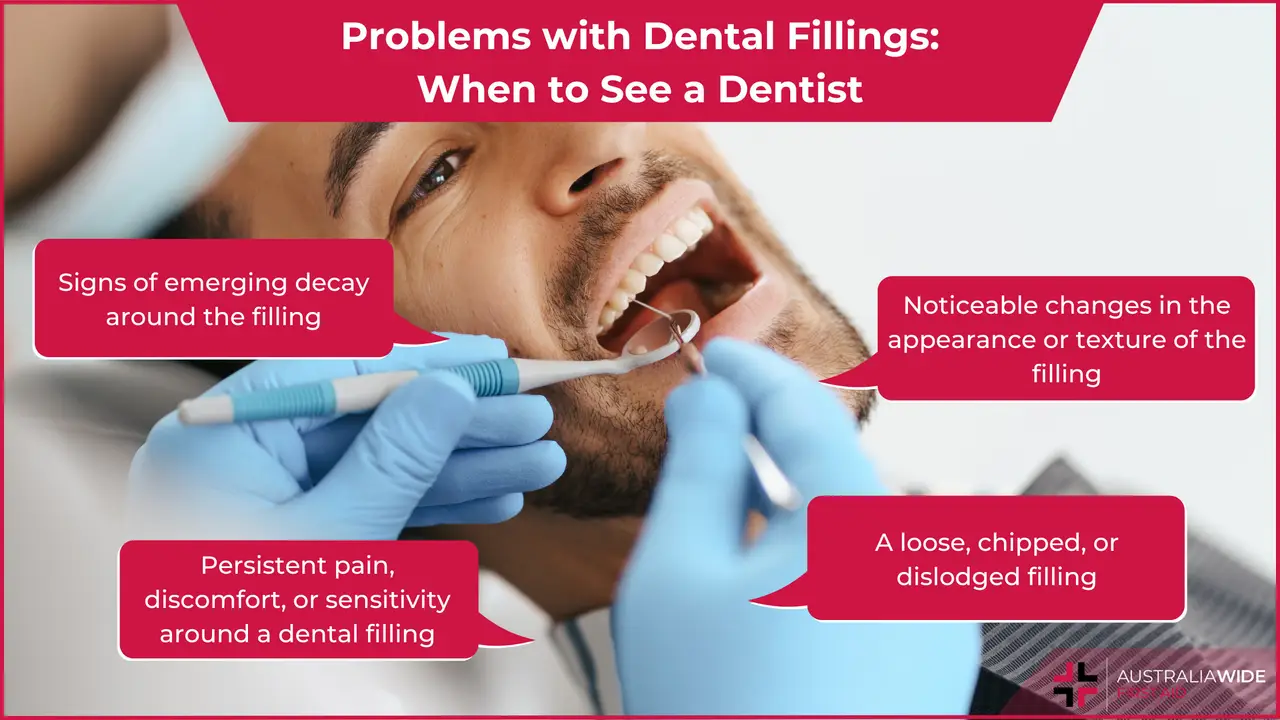Common Problems with Dental Fillings: Causes, Symptoms, and Solutions


Dental fillings play a critical role in contemporary dentistry, offering an effective means of restoring teeth damaged by decay, fractures, or other issues.
However, akin to any dental procedure, dental fillings can sometimes present difficulties or complications.
This article delves into prevalent problems that individuals may encounter with dental fillings, exploring their root causes, recognizable symptoms, and potential resolutions.
Post-filling sensitivity is a relatively common phenomenon.
It can arise due to various factors, including the interaction between the filling material and the tooth's natural structure, as well as the removal of decayed or damaged tooth material during the preparation process.
Symptoms: Patients often experience heightened sensitivity in the days or weeks following a filling procedure.
This sensitivity can manifest as discomfort or pain when exposed to temperature extremes, such as hot or cold foods and beverages. It might also be triggered by sweet or acidic substances.
Solution: Typically, this sensitivity is temporary and subsides as the tooth adjusts to the new filling.
Patients can manage discomfort by using toothpaste formulated with fluoride and potassium nitrate. It is also helpful to avoid extreme temperature changes in their diet.
However, if the sensitivity persists or worsens over time, consulting a dentist for a thorough evaluation is recommended. They can determine whether there's an underlying issue that requires attention.
Dental fillings, especially larger ones or those in place for an extended period, can become susceptible to fractures.
Filling fractures can result from normal wear and tear due to chewing, grinding, or clenching, as well as accidental biting on hard objects. Sometimes, the filling can also chip or crack.
Symptoms: Individuals with fractured fillings may experience sharp pain when biting down, heightened sensitivity to pressure, or discomfort while eating. They might also notice rough or jagged edges on the filling itself.
Solution: Addressing fractured fillings promptly is crucial to prevent further damage to the tooth. Dentists typically recommend replacing the damaged filling with a new one.
In cases where the damage is extensive or compromises the tooth's structural integrity, alternative treatments like dental crowns may have to be considered.
Inadequate oral hygiene practices can lead to the accumulation of plaque and bacteria around the edges of dental fillings.
This can result in recurrent decay, as the bacteria release acids that attack the enamel and adjacent tooth structure.
Symptoms: Discoloration around the filling, textural irregularities, and occasional pain or sensitivity may indicate the presence of decay.Solution: Regular dental check-ups are essential for monitoring the condition of dental fillings, detecting early signs of decay and ensuring proper oral health.
If decay is caught early, the affected area can be cleaned, and a new filling can be placed preventing further damage.
In more advanced cases, a larger restoration might be necessary to restore the tooth's integrity.
Although relatively rare, some individuals may experience allergic reactions to the materials used in dental fillings. This is often associated with amalgam (silver) fillings, which contain mercury and other metals.
Although these fillings are now on the brink of extinction and are no longer used.
Symptoms: Allergic reactions can manifest as inflammation, redness, itching, or rashes in the mouth or on the skin.
Solution: Suspecting an allergic reaction warrants prompt consultation with a dentist. They can conduct tests to identify the specific materials triggering the reaction and suggest alternative filling materials less likely to induce an allergic response.
Over time, dental fillings can become loose or dislodged due to factors such as natural biting and chewing forces or gradual wear and tear on the filling material. These types of fillings also put the tooth at risk for further damage and decay and therefore must be treated promptly.
Symptoms: Patients may sense movement or space around the filling, experience discomfort while chewing, and heightened sensitivity in the affected tooth.
Solution: Addressing a loose or dislodged filling requires immediate dental attention. Leaving a filling unrepaired can expose the tooth to bacteria and elevate the risk of further damage. Dentists can assess the situation and determine whether the filling can be resecured or requires replacement.
Occasionally, patients may perceive a dental filling as oversized or rough. This could result from improper contouring of the filling material or an excessive amount being used.
These types of dental fillings disturb the bite and may lead to jaw-joint problems if left untreated.
Solution: If a filling feels excessively large or rough, it is advisable to promptly contact the dentist. They can reassess the filling's contours and make necessary adjustments to ensure proper fit and comfort.
While routine dental check-ups are pivotal for maintaining oral health, specific circumstances necessitate timely dental care related to dental fillings:
Dental fillings are indispensable for preserving oral health and restoring damaged teeth.
Although challenges may arise with fillings, they can often be effectively addressed through prompt communication with a dental professional.
By diligently monitoring the condition of dental fillings and adhering to recommended oral hygiene practices, the risk of complications can be minimized, contributing to a healthy smile for years to come.

March 25, 2025
Explore non-traditional paths to sobriety, including mindfulness, yoga, nutritional therapy, and community-based support, for a personalized approach to recovery.

September 7, 2022
Menopause is the final period, when a woman, trans man, or non-binary person assigned female at birth's ovaries run out of eggs and the body can no longer ovulate. Menopause comes with several symptoms, complications, and treatment options.

July 26, 2024
Transcutaneous Electrical Nerve Stimulation (TENS) is a therapeutic method of pain relief. It utilises an electrical device that emits electrical currents and streams the impulses via electrode patches attached to the skin.